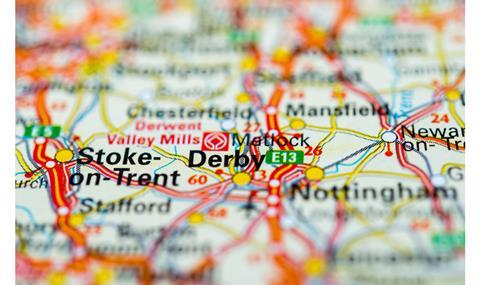
Derby City Council has rejected plans for a clean air zone, after residents and businesses voted “overwhelmingly” for a traffic management system to cut emission levels in the city.
Almost three quarters (73.6%) respondents to the city’s public consultation voted for a traffic management system, compared to 27.5% for a charging zone within Derby’s inner ring road and 17.1% for a charging zone within the city’s outer ring road.
Announcing its decision last week, Derby City council’s deputy leader Matthew Holmes said: “The message was very clear that charging motorists and business to enter a clean air zone was not supported nor would it be the right solution for Derby despite other local authorities pursuing charging schemes.”
He added that the council was “encouraged that its preferred option had received such substantial support” from the public.
The council has launched a second consultation this week sets out in detail the traffic management measures for the city centre and other measures such as electric vehicle power point initiatives and cycling route schemes.
Read more
- Truck manufacturers slam EU plan to slash truck emissions by a third by 2030
- The end is nigh for Euro-5 as clean air zones near fruition
- HGVs will need to meet Euro-6 emissions standard to operate across London from 2020
RHA policy director Duncan Buchanan told MT: “This is exactly the sort of thing we need to have – a good practical and creative solution that tackles the problem and doesn’t just demonise the vehicles and works with the physical environment.”
Derby is one of the first five cities, including Leeds, Birmingham, Southampton and Nottingham, tasked by DEFRA with cutting high levels of nitrogen dioxide by 2020 and directed to consider the introduction of CAZ schemes to do this.
So far Leeds, Birmingham and Southampton have opted for CAZ schemes, which will set daily charges of £50 and between £50 and £100 respectively on all non-Euro-6 trucks.
Nottingham has chosen to rejected the CAZ option, choosing to drive down emissions through retrofitting its buses to Euro-6 standards and by requiring taxis to improve their emission standards.














